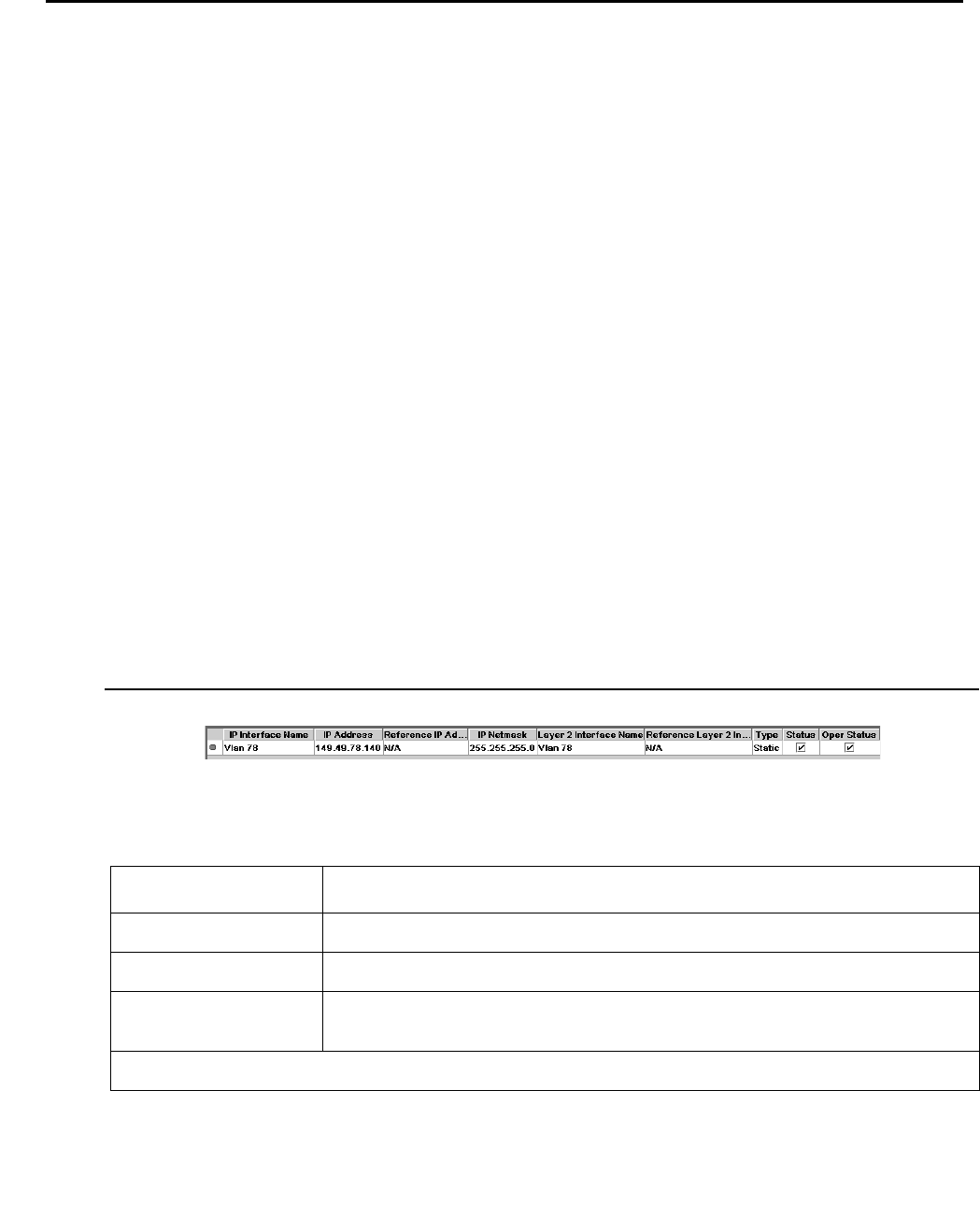
Configuring IP Interfaces
Issue 5 October 2007 219
Configuring IP Interfaces
IP interfaces represent the logical connections of the device to the IP nets/subnets attached to
it. Each IP interface corresponds to one net/subnet.
You can create either a static IP interface or an unnumbered IP interface. When you create a
new IP interface, RIP and OSPF interfaces are automatically created and assigned enable
status. When you delete an IP interface, the device deletes the associated RIP and OSPF
interfaces.
Note:
Note: An IP unnumbered interface can be configured on point-to- point Interfaces only.
An IP unnumbered interface supports all the parameters of a static PPP IP
interface except for Broadcast address, which cannot be configured on IP
unnumbered interfaces.
To create entries in the IP interface table, first specify whether the interface is static or
unnumbered using the Type field (the default value is static). Then configure the following
fields:
● If you are configuring a static interface, configure the fields IP Address, IP Netmask, and
Layer 2 Interface Name.
● If you are configuring an unnumbered interface, configure the fields Layer 2 Interface
Name and Reference Layer 2 Interface Name. There is no need to configure IP address
and IP Netmask.
To define and display the IP interfaces:
Select IP Route > IP Interfaces. The IP Interfaces window opens.
Figure 96: IP Interfaces Window
The following parameters are displayed:
Table 70: IP Interface Table Parameters
Field Description
IP Interface Name The name assigned to the selected IP interface.
IP Address The IP address assigned to the device on this subnet.
Reference IP
Address
The IP address borrowed for an unnumbered IP interface. If the IP
address is not unnumbered this field returns a value of N/A.
1 of 3


















